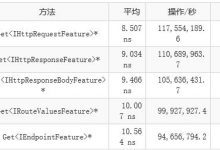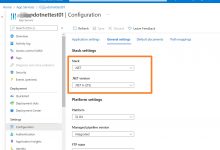一、AOP概述
Spring AOP官方
- AOP:面向切面编程,相对于OOP面向对象编程。存在目的是为了解耦。AOP可以让一组类共享相同的行为。在OOP中只能继承和实现接口,且类继承只能单继承,阻碍更多行为添加到一组类上,AOP弥补了OOP的不足。
- 还有就是为了清晰的逻辑,让业务逻辑关注业务本身,不用去关心其它的事情,比如事务。
- Spring的AOP是通过JDK的动态代理和CGLIB实现的。
二、相关术语
| 术语 | 描述 |
|---|---|
| 通知 / 增强(Advice) | 需要完成的工作叫做通知,比如事务、日志等先定义好,然后需要的地方再去用 |
| 连接点(Join point) | 就是spring中允许使用通知的地方 |
| 切点(Poincut) | 与连接点匹配的谓词,其实就是筛选出的连接点,一个类中的所有方法都是连接点,但又不全需要,会筛选出某些连接点做为切点。如果说通知定义了切面的动作或者执行时机的话,切点则定义了执行的地点 |
| 切面(Aspect) | 其实就是通知和切点的结合,通知和切点共同定义了切面的全部内容,它是干什么的,什么时候在哪执行 |
| 引入(Introduction) | 在不改变一个现有类代码的情况下,为该类添加属性和方法,可以在无需修改现有类的前提下,让它们具有新的行为和状态。 |
| 目标(target) | 被通知的对象 |
| 织入(Weaving) | 把切面加入程序代码的过程,切面在指定的连接点被织入到目标对象中,在目标对象的生命周期里(编译期/加载期/运行期)可以进行织入 |
1、通知类型
| 通知类型 | 描述 |
|---|---|
| before(前置通知) | 在方法开始执行前执行 |
| after(后置通知) | 在方法执行后执行 ,无论是正常还是异常返回 |
| afterReturning(返回后通知) | 在方法正常返回后执行 |
| afterThrowing(异常通知) | 在抛出异常时执行 |
| around(环绕通知)) | 在方法执行前和执行后都会执行 ,相当于before + after |
执行顺序:around > before > around > after > afterReturning
三、基于AspectJ的AOP注解
1、切面切点
| 注解 | 参数 |
|---|---|
| @Aspect | value = “” |
| @PointCut | value = “” ,argNames=\”\” |
2、通知类型
| 注解 | 参数 |
|---|---|
| @Before | value = “” ,argNames=\”\” |
| @After | value = “” ,argNames=\”\” |
| @Around | value = “” ,argNames=\”\” |
| @AfterReturning | value = “” ,argNames=\”\”, pointcut=\”\”, returning = “” |
| @AfterThrowing | value = “” ,argNames=\”\”, pointcut=“”, throwing=\”\” |
3、@PointCut支持的表达式
| 表达式 | 描述 | 示例 |
|---|---|---|
| execution | 用于匹配方法执行的连接点。 语法:execution(方法修饰符(可选) 返回类型 类路径 方法名 参数 异常模式(可选)) | execution(public * (…) 所有public方法; execution( set*(…)) 任何以set开头的方法); execution(* com.xyz.service..(…)) 匹配service包下所有的方法; execution(* com.xyz.service….(…)) 表示匹配service包和它的子包下的方法 |
| within | 将匹配限制为某些类型内的连接点 | within(com.xyz.service.) service包的任何连接点; within(com.xyz.service…) service包和它的子包的任何连接点 |
| this | 指定AOP代理类的类型 | this(com.xyz.service.AccountService) 代理实现AccountService接口的任何连接点 |
| target | 指定目标对象的类型 | target(com.xyz.service.AccountService) 目标对象实现AccountService接口的任何连接点 |
| args | 指定参数的类型 | args(java.io.Serializable) 任何采用单个参数且在运行时传递的参数为Serializable的连接点 |
| bean | 指定参数的类型 | bean(tradeService) 名为tradeService的Spring bean上的任何连接点; bean(Service) Bean上具有与通配符表达式 Service匹配的名称的任何连接点 |
| @target | 带有指定注解的类型 | @target(org.springframework.transaction.annotation.Transactional)目标对象带有@Transactional注释的任何连接点 |
| @args | 指定运行时传的带有注解的参数 | @args(com.xyz.security.Classified)任何采用单个参数的连接点,并且传递的参数的运行时类型具有@Classified批注 |
| @within | 匹配使用指定注解的类 | @within(org.springframework.transaction.annotation.Transactional)目标对象的声明类型具有@Transactional批注的任何连接点 |
| @annotation | 指定方法所应用的注解 | @annotation(org.springframework.transaction.annotation.Transactional) 执行方法带有@Transactional注释的任何连接点 |
四、AOP应用场景
1、记录日志
- 切面类
package com.spring.demo.aop;import lombok.extern.slf4j.Slf4j;import org.aspectj.lang.JoinPoint;import org.aspectj.lang.annotation.*;import org.springframework.stereotype.Component;import org.springframework.web.context.request.RequestAttributes;import org.springframework.web.context.request.RequestContextHolder;import org.springframework.web.context.request.ServletRequestAttributes;import javax.servlet.http.HttpServletRequest;import javax.servlet.http.HttpServletResponse;/*** @Description: 日志切面类* @Version: 1.0*/@Slf4j@Aspect@Componentpublic class LogAspect {/*** 确定切入点位置,通过些规则来确定哪些方法是要增强的*/@Pointcut(\"within(com.spring.demo.controller.*Controller)\") // controller包中所有Controller结尾的类public void controllerLogPointCut(){}/*** 前置通知,具体的增强代码片** @Param joinPoint 连接点*/@Before(\"controllerLogPointCut()\")public void controllerBeforeLog(JoinPoint joinPoint) {// mvc获取请求的方式RequestAttributes requestAttributes = RequestContextHolder.getRequestAttributes();HttpServletRequest request = ((ServletRequestAttributes) requestAttributes).getRequest();// 记录请求日志log.info(\"Request type is {}\", request.getMethod());log.info(\"Request url is {}\", request.getRequestURL());log.info(\"Target is {}\", joinPoint.getTarget().getClass());}/*** 后置通知,具体的增强代码片** @Param returnResult 目标类方法的返回结果*/@AfterReturning(pointcut = \"controllerLogPointCut()\", returning = \"returnResult\")public void controllerAfterLog(Object returnResult) {// mvc获取响应的方式RequestAttributes requestAttributes = RequestContextHolder.getRequestAttributes();HttpServletResponse response = ((ServletRequestAttributes) requestAttributes).getResponse();log.info(\"Response status is {}, data is {}\", response.getStatus(), returnResult.toString());}/*** 异常时通知,具体的增强代码片** @Param exception 目标类方法执行过程中出现的异常*/// @AfterThrowing(pointcut = \"controllerLogPointCut()\", throwing = \"exception\") // 方式1@AfterThrowing(pointcut = \"execution(* com.spring.demo.controller.*.*(..))\", throwing = \"exception\") // 方式2public void controllerAfterLog(Exception exception) {// mvc获取响应的方式RequestAttributes requestAttributes = RequestContextHolder.getRequestAttributes();HttpServletRequest request = ((ServletRequestAttributes) requestAttributes).getRequest();log.info(\"Request url is {}\", request.getRequestURL());log.info(\"Inner exception is {}\", exception.getMessage());}}
- 测试
正常返回时,Before和AfterReturning通知生效,前置通知代码在方法执行前执行,后置返回通知是在方法调用完后才执行的

异常返回时,Before和AfterThrowing通知生效,前置通知代码在方法执行前执行,异常后异常时通知代码先执行,然后再抛出异常片段
2、事务管理
后补。。。
 爱站程序员基地
爱站程序员基地


